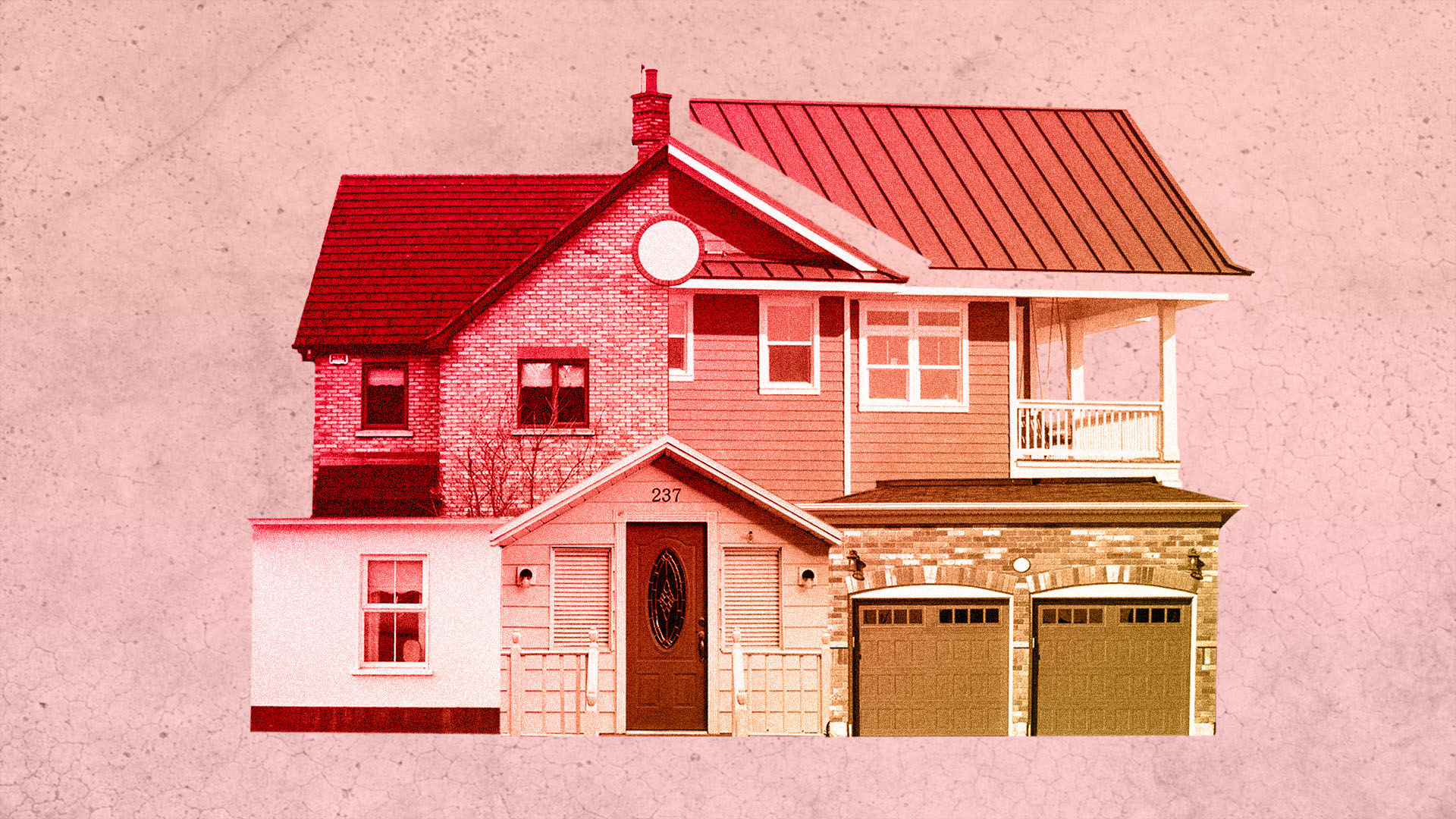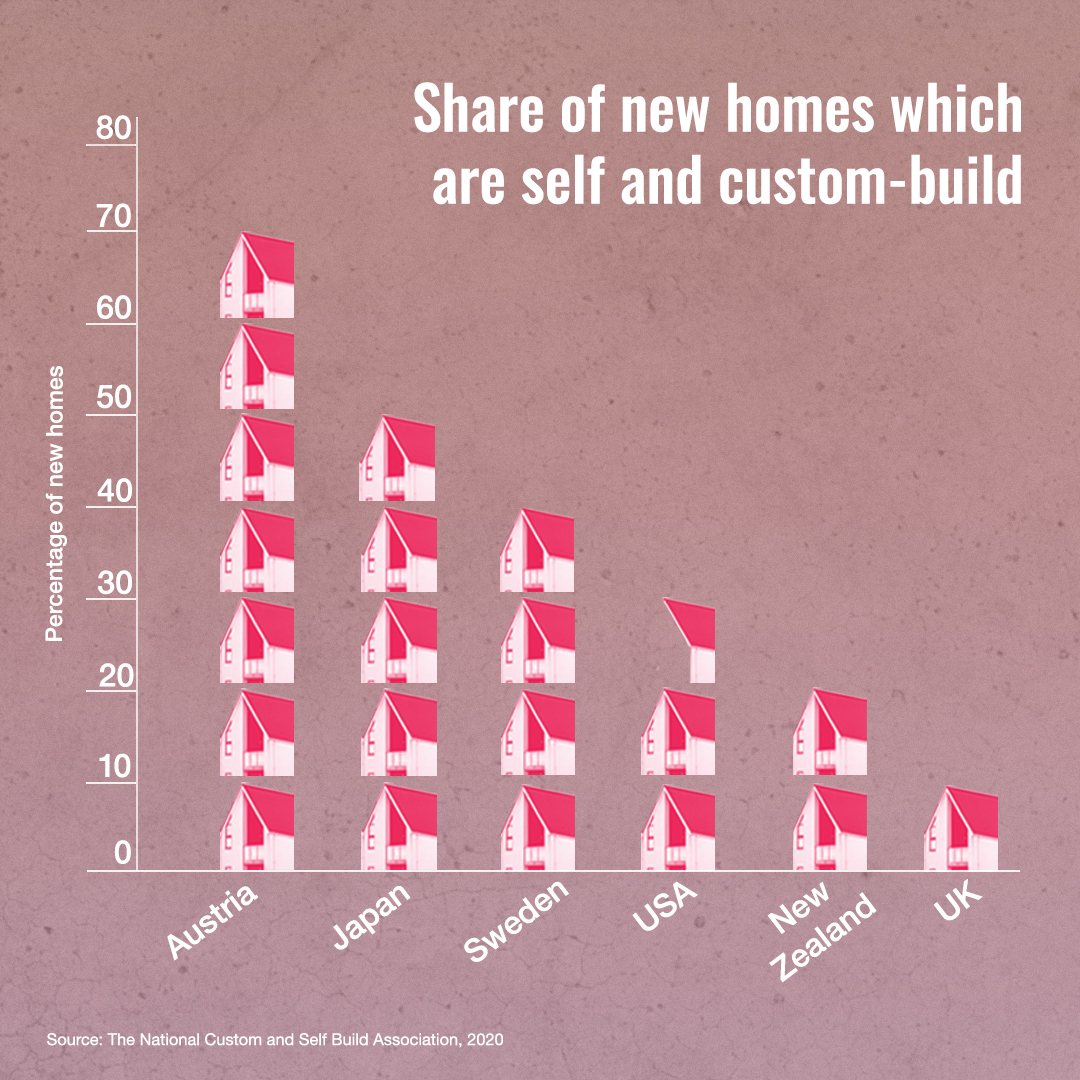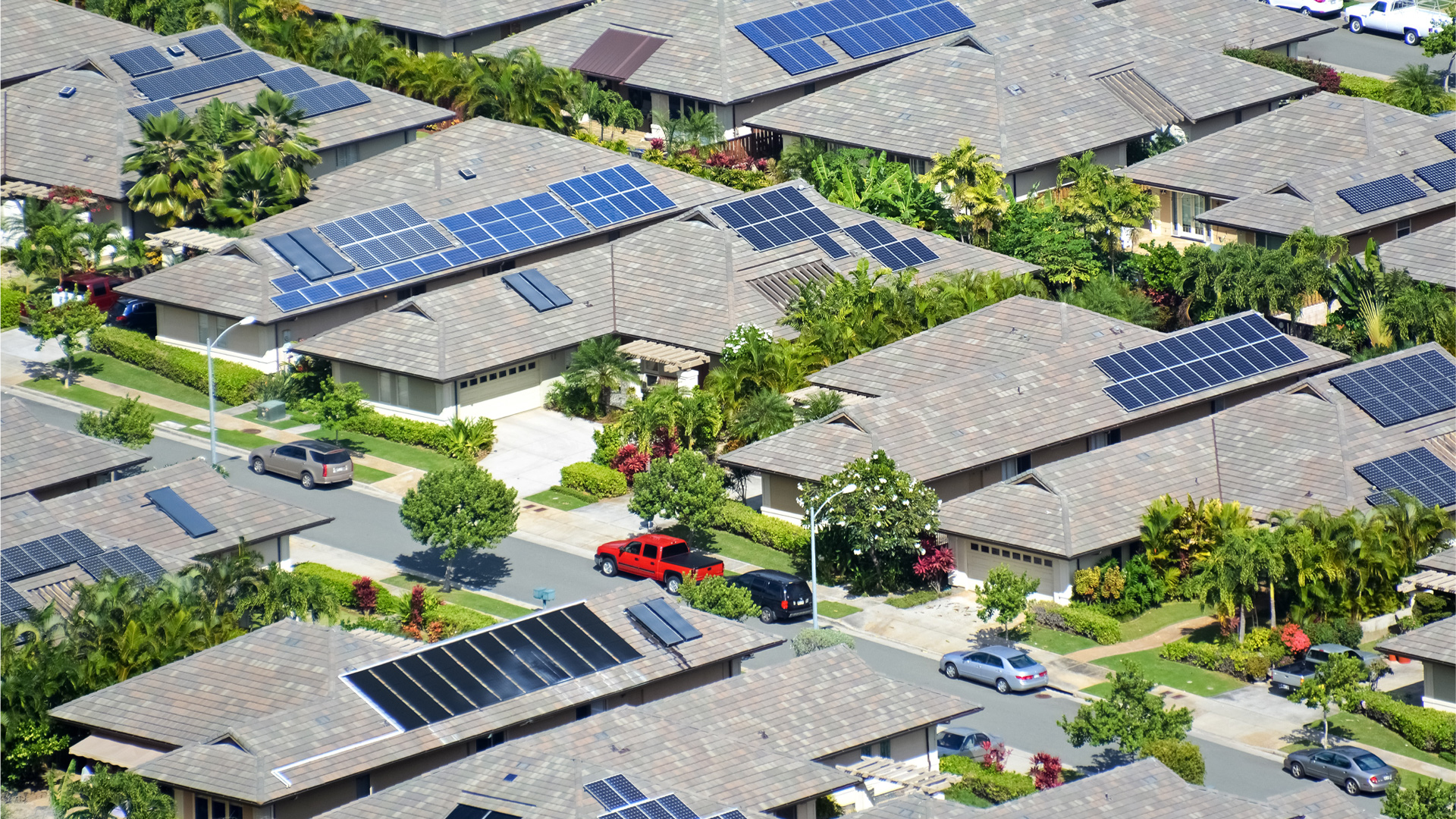
A home in the country, designed to your family's specific needs and lifestyle at a price lower than the cost of a developer-built house, has traditionally been a lofty aspiration for many; a fantasy rather than a realistic, achievable goal.
In 2017, between 7% and 10% of home completions in the UK were self-build projects, while in some European countries, that proportion exceeds 60% of total annual housebuilding. In Austria, 70% of the housing stock is self-build, while in Germany and Italy it is more than 65%.
However, the self-building culture in the UK could be about to change following a raft of measures to encourage the market. The Self-build and Custom Housebuilding Act 2015 requires local planning authorities in England to maintain registers of self-builders and custom builders looking to acquire suitable land and consider the demand on these registers in the planning activities. Since 2015, more than 50,000 people have signed up to these registers. And in April 2021, the government introduced a Help to Build scheme of more than £150m of equity loan funding for self-builders.
A review conducted by Richard Bacon MP and published in August 2021 estimated that further reforms could generate between 30,000 and 40,000 self-build homes a year.
Self-builders need guidance
David Straughan MRICS, director at Eriss, says that while some self-builders have experience, perhaps from the construction industry, many have little knowledge and underestimate the challenges involved. “For example, it’s not unheard of for self-builders to overlook that buildings on a greenfield site may not have access to services in the area. I’ve known cases where people had to get services from much further down the road, and it cost them a lot of money. And it boils down to not having done the necessary investigations at the time of buying the land.”
Unless they engage professionals with experience of the processes, who can apply appropriate scrutiny at the various stages, there are many pitfalls self-builders can encounter.
Finding smaller plots of land for a single dwelling is difficult. Typically, those plot types are somebody’s large garden annexed, a bit of wasteland or a narrow strip of land somewhere, all of which will have their own constraints. Straughan says it is not uncommon in the north-east of England for old derelict property to be bought up and demolished for rebuilding.
“Then you have a lot of cost implications of trying to work out the overall value of the property after construction. The property may only be valued at the end of it for the size of the property you can build, and with everything you have to do, you could be in negative equity.”
It is not unheard of for some self-builders to take up to five years from initial thoughts to completing the build. “What do you do for those five years? You’re in your own accommodation – if it’s mortgaged, you’re paying the ongoing cost of that plus the build. There is an initial financial burden and quite a stressful situation.”
For this reason, Tony Mulhall MRICS, senior specialist, land and resources, at RICS, questions how many people expressing an interest in self-build to their local authorities see it through after the reality of self-build sets in.
Land availability
“This is largely a land availability issue,” says Mulhall. “At the core of this problem is the inability to release land at affordable prices in England, and that is the reason why you have lots of different strands of housing delivery initiatives popping up.”
In Ireland, it is quite common in rural areas for people to self-build. “It is almost second nature for farmers’ sons or daughters to get a plot of land and self-build,” says Mulhall. “They will probably know bricklayers and builders and with some luck there is a house built in nine months. The worst thing may be that the house probably never gets fully completed, but it does satisfy the requirement for people to house themselves and provide a significant number of houses.”
Mulhall believes that the prospects for setting up a system where individuals can go out and simply buy a plot of rural land from a farmer is an unlikely scenario in the UK.
The customisation route, where people allocate a plot of land and request a customised version of a more standardised building, will be more achievable for most people, taking a lot of the pain out of the process while providing some scope for variety.
Building technologies will also enable faster, cheaper and more sustainable construction. Straughan says that there is a lot of flexibility with some of the prefab timber frame module buildings with enormous scope in design, providing you keep to multiples of 600mm within the specifications.

"I've known cases where self-builders had to get services from much further down the road, and it cost them a lot of money" David Straughan MRICS

Social considerations
Multiple factors determine how different countries manage self-builds: the density of population, historical treatment of land, the nature of their economy, agricultural or industrial and homeownership culture.
However, it has also been proven to play a significant role in fulfilling housing needs in different parts of the world. In India, excluding the largest cities such as Mumbai, around 60% of homebuilding is self-build, mainly because the alternatives in Tier 2 towns and cities are minimal. The government’s Pradhan Mantri Awas Yojana, which translates as Housing for All, has sanctioned 11.4m houses since 2015 and completed 5.5m.
Vinod Anand Bijlani, a sustainability and smart cities expert, who has contributed to the design and implementation of smart city projects in India and Singapore, says: “From time to time the government announces the sale of plots of land at subsidised rates. People can apply for purchase, and almost through a lottery-like system can win an opportunity to benefit from this subsidy, encouraging more affordable self-building.”
Self-build schemes enable lower-income groups to own a home and provide allowance and sanctions for incremental housing, with few design restrictions. “Self-builders can build whatever they can afford. Typically, self-build homes in India start small, maybe as a two-bedroom house, and can be extended relatively easily whenever you have the finance to do so. There is a freedom of design, to start small and develop the home over time.”
The downside of this is that there is little visual harmony or consideration given to housing, although as Bijlani points out, given the enormity of housing demand in India, the visual impact is not a priority. “Besides, the design of each house comes to hold its own, with its unique personality and appeal. It also speaks for the owner’s priorities in a home,” he adds.
From a social and environmental perspective, self-build regimes can provoke various challenges. Self-building can lead to sprawling ribbon development in some places, where homes crop up alongside roadways trailing suburban dwellings into rural areas, as seen in northern Italy. Where clusters of self-build homes use septic tanks to replace sanitation services, there can be concerns about contamination of the local water table.
Leaving aside that some dwellings will never be sufficiently completed, individual styles, while improving the variety of the housing stock, may not be to everyone’s taste. Visually incongruous or eccentric designs may adversely affect an area or struggle to sell further down the line.
Mulhall says: “Here surveyors unwittingly begin to shepherd self-builders towards more conventional style houses that won’t scare off future buyers in a re-sale. That kicks in at the point when the mortgage is being approved.” Lenders will want assurances the property is suitable for the general market, so risk-assessment and satisfying financial services can intrude into the personal design choices in a more conservative lending market.
Planned communities of self-builders
Almere, a new town on the outskirts of Amsterdam, is widely looked to as an exemplar of organised support for self-build while establishing a sense of community. The entire area is master-planned by the local council and split into different districts, including sustainable and lower-income spaces. The plots are sold at a fixed rate per square metre, and self-builders adhere to limited restrictions.
A spokesperson for MVRDV, the architectural firm that worked on the development strategy for Almere Oosterwold, one of the districts of Almere says: “The urban planning itself is an open process in which individual initiatives can thrive.” Oosterland, which translates as Freeland is developed on the edge of farmland. While allowing for individuality in design to maintain the rural character, the overall programme is maintained at 18% construction, 8% roads, 13% public green space, 2% water and 59% urban agriculture.
“It’s not complete anarchy,” MVRDV says, “It is based on common sense. You’re not only developing your own plot, but also all the necessary components around it, including infrastructure, energy supply, waste disposal, and public parks, you contribute to the development of your neighbourhood.” The principle is simple: you can create almost anything you like, but you have to organise everything yourself.
As a self-build regime, it has the advantage of pooling land, freedom of choice and collective knowledge in one place where dedicated self-builders can create a variety of quality dwellings. It sounds ideal on many levels. But the question is, how much land could become available for similar programmes in high-density towns and cities at affordable prices?

“Typically, self-build homes in India start small, maybe as a two-bedroom house, and can be extended relatively easily whenever you have the finance to do so” Vinod Anand Bijlani, sustainability and smart cities expert


